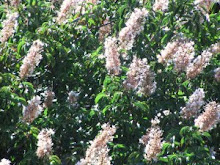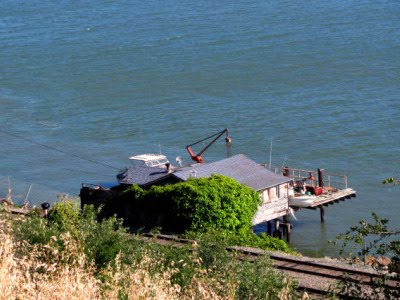To ease the gnawing vulture of thy mind.”
(from Shakespeare’s “Titus Andronicus”)
FAMILY Cathartidae
ORDER Ciconiiformes
SPECIES Cathartes aura
Once the sun came dangerously close to the earth. The Great Spirit sent Fox up to push it away but when Fox bit the sun to push it away, he burned his mouth and fell back to earth. Still, the sun did not move. Then Great Spirit sent the Opossum to lasso the sun with its tail and pull it away from the earth. Opossum took to the task but only succeeded in burning off all the hair on her tail. Still, the sun did not move. Finally, Great Spirit sent a large bird with strong black wings and feathers all over his body and face. Vulture shoved his beak deep into the heart of the sun and succeeded in moving it farther away. In so doing, he burned off all the feathers on his head and the heat turned his face bright red. (Native American legend)
Our common turkey vulture, Cathartes aura, has been sorely misunderstood. A New World bird, turkey vulture makes his home from Canada to Cape Horn. Cathartes aura means something like “purifying breeze,” or “cleansing breeze,” or possibly “golden breeze,” depending on whose etymology you accept. Calling the turkey vulture a buzzard is a likely holdover from when English colonists likened the eastern Black vulture to European buzzards which are of the buteo or hawk family. Our California vulture is more akin to the stork than to hawks or eagles; the "turkey" part of his full name is a reference to his bald red head and dark plumage. The Latin root of the word “vulture” identifies this bird as a skilled “tearer” of food, a technique he uses much in the way we gnaw on barbeque ribs or tear at tough but good-tasting sourdough.
 When you see a vulture circling, he is not necessarily sighting a dead animal as many people think. The bird is “climbing thermals,” attempting to gain elevation in order to mark territory, protect a nest, scout for food, or do all three at once. The vulture is constantly on the look-out for pockets of warm rising air and beats his wings somewhat awkwardly at first to locate and climb these thermals. When you see several vultures circling and riding high on thermals, it is called a “kettle,” while a gathering of vultures on the ground is called a “venue.” The turkey vulture is a graceful, skilled glider who can soar up to six hours without flapping his large wings.
When you see a vulture circling, he is not necessarily sighting a dead animal as many people think. The bird is “climbing thermals,” attempting to gain elevation in order to mark territory, protect a nest, scout for food, or do all three at once. The vulture is constantly on the look-out for pockets of warm rising air and beats his wings somewhat awkwardly at first to locate and climb these thermals. When you see several vultures circling and riding high on thermals, it is called a “kettle,” while a gathering of vultures on the ground is called a “venue.” The turkey vulture is a graceful, skilled glider who can soar up to six hours without flapping his large wings. Another common misunderstanding about turkey vultures is that they are vicious hunters; in truth, they are not hunters at all, but gentle janitors who scour our roadsides and fields of carrion, occasionally enjoying a salad of decaying vegetation or marshland plants. On a rare occasion, he might sample a heron nestling but, in general, the vulture is not predatory.
Not knowing where and when you will eat next can make you do strange things. Since the turkey vulture depends on carrion--dead animal flesh--he travels far and wide to feed himself and his family, visiting roadsides, farms, ranches, shorelines, hunting grounds and campgrounds. One group of researchers hid dead chickens in a forest and discovered that vultures had no problem locating the hidden carcasses, which they do by sniffing out ethyl mercaptan gas that arises from a deceased animal.
In fact, Mr. and Mrs. Vulture are quite the ‘family-values’ kind of birds we want in our neighborhoods. Cooperative and monogamous, they mate not just for a long season of raising a family but for life. And, since they can live up to 16 years in the wild--and as long as 30 years in captivity--they have had to learn some tricks for keeping interest in their mates. “Toulouse,” a turkey vulture who lives at San Francisco zoo has lived more than 30 years.
They cooperate too, with others in their species while eating. One bird may bite into a tough piece of meat, holding the carcass as it pulls, while another pulls at the opposite end so they can each get a good chunk of food torn from the flesh of a dead animal.
 The vulture relies on two powerful senses: sight and smell although he doesn’t see well at night. His lack of a syrinx--the vocal organ found in songbirds--means that he can only grunt and hiss. Fortunately, he has few natural predators and a cooperative spirit, so he doesn’t have to do that very often. He has long legs and vestigial (meaning, he no longer needs it) webbing between his toes.
The vulture relies on two powerful senses: sight and smell although he doesn’t see well at night. His lack of a syrinx--the vocal organ found in songbirds--means that he can only grunt and hiss. Fortunately, he has few natural predators and a cooperative spirit, so he doesn’t have to do that very often. He has long legs and vestigial (meaning, he no longer needs it) webbing between his toes. One seemingly nasty habit the vulture has is the practice of urohydrosis, a fancy word for saying that he poops on himself.
If you get close enough to observe the legs of a vulture, you may see they are coated with a whitish residue. This liquid excrement helps to keep the vulture’s legs nice and cool. Even that baldy red head has a function. Since the vulture can stick his head deep into the orifices of a dead animal to draw out sweet-tasting internal organs and sinews, he can get himself pretty messy. If he had feathers all over his face, they would be hard to clean and could cart around bacteria. Instead, he can easily clean the bare skin. Because the turkey vulture regularly sticks his strong short, hooked beak into bloody, decaying carcasses, he has built up an incredible resistance to bacteria and disease and through his generous act of clearing our roadways, farms and fields of dead vermin, raccoons, skunks, and deer, we, too, are all the more hygienic. Turkey vultures like a good picnic and gather around located food. They rarely have to defend it unless a larger, distant relative like a condor or black vulture intrudes; for the most part, predatory birds like hawks and eagles would rather hunt and kill their own meal. Turkey vultures prefer eating out and like the meat of herbivorous (plant-eating) animals best. They do not take food back to the nest, except to tuck some of it into their crops for regurgitating into the mouths of hungry young ones. Yummers!
Northernmost vultures migrate but our local birds have plenty to eat and places to sleep. We are fortunate to see them hovering above McEwen Road, Pomona Street, and Highway 4 as they keep the roadsides cleared of road-kill.
The male turkey vulture is a real ham when springtime rolls around and it is time to hook up: he struts around with wings outspread like a toreador with a red blanket, bobbing his head and rising to his full height. With deep grey-brown eyes and long eyelashes on his upper lid, his two pinkish-white stained legs, two-toned blackish-brown wings, and featherless red head, he is Mr. Fancy courting a dame who tends to be somewhat larger than Himself. Other than size-difference, both male and female look much alike.
When they finally mate, they take off on pair flights, alternately rising in the thermals above their nests with wingtips nearly touching. This lets other vultures know that they have settled on this particular plot of earth and to back off. Both male and female care for the nest of one or two brownish-spotted cream-colored eggs. At least one egg may survive the 35-40 day incubation and be ready to fledge (learn to fly) at about eight to 13 weeks. The family group remains together through the summer and into early fall.
They enjoy a somewhat private home life and are solitary nesters, adopting nests in caves, cliffsides and hollow trees. They do not actually build nests of twigs or found materials and lay their eggs directly on whatever surface of the nest they adopt. The kids like to hang around with mom and dad for a relatively long time as the bird world goes. They will fly to and from the roost, hanging out with one or the other parent for months after fledging, still taking food from their parents. Kind of like our 20-year-olds today.
SOME ADDITIONAL FACTS:
Like shoreline cormorants, turkey vultures like to sun their wings, holding them out and away from their bodies in a posture that made Edward Gorey famous. Their feathers can get misshapen when they soar, so this activity may help them get straightened out. Turkey vultures are not in danger of extinction although they are protected under the Migratory Bird Treaty Act of 1918.
The ancient Egyptians worshipped a mother goddess Met who was represented by an Old World vulture, while the Greeks believed the vulture was descended from the mythological griffin. In Greek mythology, the harbingers of trouble. But closer to home, the Pueblo Indians collected vulture feathers to use in purification ceremonies, believing they helped send away evil influences in people and objects. Because the vulture routinely walks a line between the living and the world of the dead, they have been honored for the balance they achieve and teach us to embrace death as a part of life. It is likely this association with death that has brought them an unearned and false reputation of being vicious and evil, but in fact they teach us to understand that death is just one more transition in a larger cycle of nature and life. They also are admired of being skillful conservers of energy as they use natural forces--the thermals--to achieve great heights and soar without effort.
Use a turkey vulture feather to purify your living space and to bring the harmonious and cooperative energy of the turkey vulture into your life. (You might want to wash it off before letting your cat chew on it.)


























No comments:
Post a Comment
Please feel free to comment or let me know about your own writings on nature, life, literature and art.